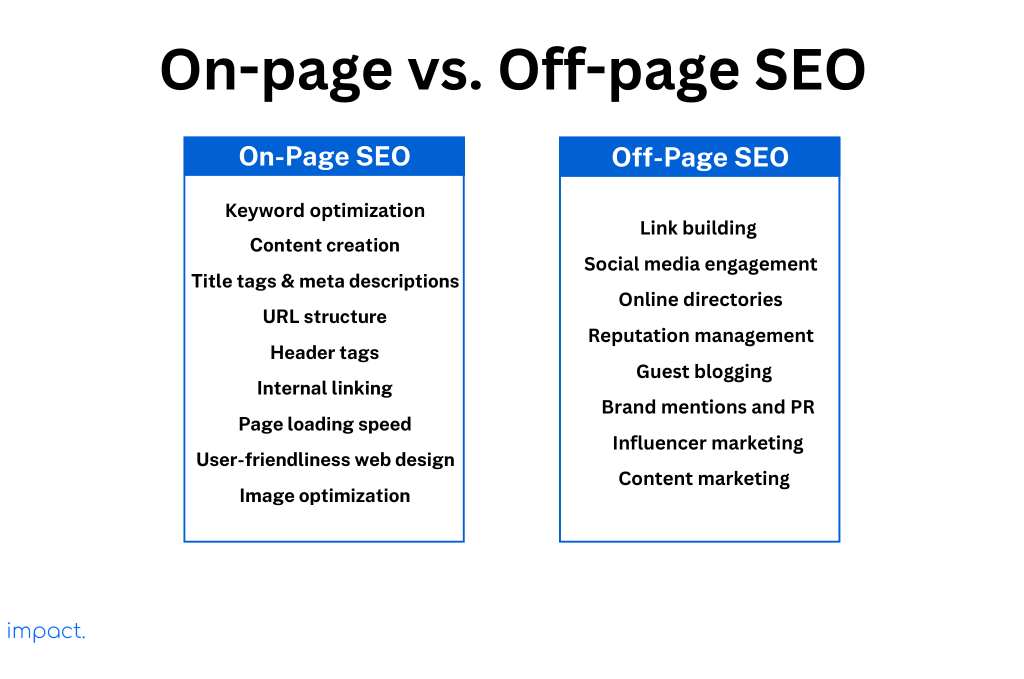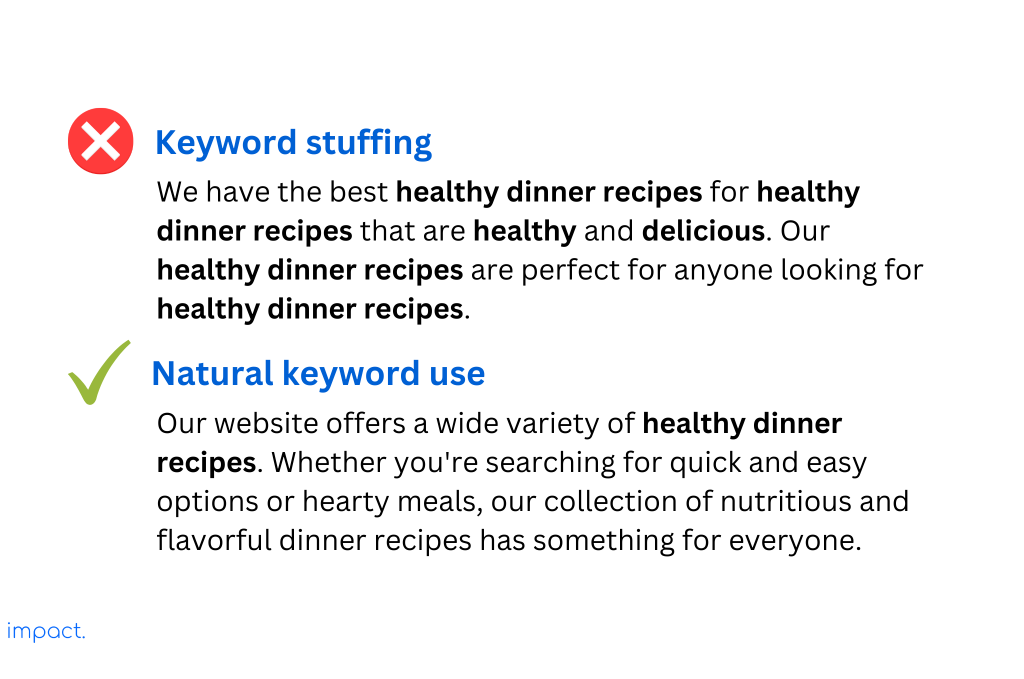Kanban: Definition, 6 Rules, and its Benefits
Kanban is a crucial part of the Just in Time (JIT) system, which we discussed…
Sean Thobias
May 17, 2025Our previous chapter discussed how important keyword research is for driving organic traffic to your website. Now, let’s shift our focus to page optimization, also known as on-page SEO.
This aspect of search engine optimization (SEO) can greatly improve your website’s visibility and ranking on search engine result pages (SERPs).
This article will define on-page SEO and discuss its key components. We will also share best practices to help you avoid common mistakes hindering your SEO efforts. So, let’s explore the world of webpage optimizations and see how these components and avoidable mistakes can greatly impact your website’s search engine performance.
On-page SEO, also known as on-site SEO, involves directly optimizing specific parts of a website. The main objective of on-site SEO is to make it simple for search engines and users to:
You should concentrate on a few essential factors to improve your website’s on-page SEO. These include your content, meta tags, URLs, headers, and internal links. By optimizing these elements, you make your website more appealing to both search engines and users.
Read more: SEO Fundamentals: Key Definitions & 4 Best Practices
Understanding the difference between on-page and off-page SEO is crucial to optimizing your website for search engines. By understanding these concepts, you can take a more comprehensive approach to improving your website’s visibility.
On-page SEO refers to the actions you can take directly on your web pages to enhance your search engine rankings. It involves optimizing various elements within your website itself. On the other hand, off-page SEO focuses on external factors that contribute to building your website’s reputation and authority.
Here’s a table that illustrates examples of on-page and off-page SEO techniques:

On-page SEO is crucial in achieving overall SEO success for your website. Here’s why it matters:
On-page SEO helps your site rank higher in search results, increasing organic traffic. Studies show that the first five organic results on a search page receive a whopping 67.60% of all clicks, while the next five only get 3.73%. It decreases further down the list.
On-page SEO helps search engines understand if your web pages are relevant to user searches. By optimizing your content and meta tags, you increase the chances of your website showing up in search results when people search for related topics. On-site SEO ensures that your website reaches the right audience and meets their needs.
When you do on-page SEO, you make your website better for users. You optimize URLs, headers, and internal links to improve navigation. These changes make it easier for visitors to find what they want and stay on your site. When people can navigate your site easily, they’re more likely to explore more pages and even become customers.
Proper on-page SEO optimization improves your website’s user-friendliness, reliability, and credibility. It creates a better user experience, builds trust in your brand, and increases the chances of visitors engaging with your content, trusting your products/services, and becoming leads or customers.
On-page SEO is the key to building a strong SEO strategy for your website. Regularly optimizing your content and website elements can create a sustainable plan to improve your search engine rankings. This results in more organic traffic, brand visibility, and ongoing business growth.
Read more: Search Engines: Inner Workings & 6 Ways to Rank Higher
Here are some important steps to optimize your on-page SEO:
The content of your page is crucial for on-page optimization. It communicates to search engines and readers what your website and business are about. To optimize it effectively, follow these steps:
The title tag is an important part of your webpage. The title appears in search results, social media, and the browser tab. To optimize it, ensure each page has a unique and descriptive title tag. This description helps people understand what your page is about.
Other tips include:
Meta descriptions are the short page descriptions that appear below the title in search results. They may not directly affect search engine rankings, but they are crucial in enticing users to click on your page.
When crafting meta descriptions, your goal is to create engaging summaries of your page content. Here’s what you should do:
When you structure your content, it’s important to use header tags. Header tags help hierarchically organize your content, making it easier for visitors to read and navigate.
The main heading, also known as H1, should include the primary keyword when it’s relevant to the content on the page. The keywords help search engines understand the main topic of your page.
For subheadings, you can use H2, H3, and so on. These subheadings further divide your content into sections, making it easier for readers to find specific information.
By using header tags effectively, you improve the readability and organization of your content, which can enhance the overall user experience on your website.
To optimize your URL structure, you must consider the following:
To optimize your images and make your website load faster, compress them. Compressing them will improve the overall user experience by reducing waiting times.
Your images must include descriptive file names and alt tags. Use relevant keywords in these descriptions to improve their visibility in search results. Additionally, provide alternative text that describes the images. This text helps users with difficulty viewing the photos and contributes to better search engine optimization (SEO) for your website.
Don’t forget this crucial step: create a value proposition for every page on your website. A value proposition is a clear and convincing statement that tells visitors what they’ll gain from that page or content.
Each page should have a goal beyond just ranking for a keyword. It’s not just about targeting keywords for SEO; each page should have a specific purpose or intent. It’s not just about driving traffic or ranking higher but providing unique value to visitors.
Create a logical internal linking structure to make it easier for visitors to navigate your website and improve their overall experience. When creating these links, use anchor text, the clickable text of a link containing relevant keywords.
An anchor text helps search engines understand the context of the linked page. It’s important to ensure that the internal links feel natural and provide value to the user. They should direct visitors to related and helpful content that adds to their understanding or provides further information on the topic they’re interested in.
Read more: Mastering Keyword Research in 8 Steps
You must avoid four common mistakes to optimize your on-page SEO and make your website more visible and user-friendly. These practices can harm your SEO efforts and hinder the overall experience for users. Here are the four things you should stay away from:
Thin content occurs when your web pages lack enough valuable information for users. They may have very little text or content that isn’t relevant or helpful. Search engines, like Google, really appreciate high-quality and informative content.
So, it’s imperative to avoid having thin content on your website to rank high in search results. Google aims to provide the best results matching users’ searches. To convince Google that your page is the best answer, you must provide comprehensive information on the topic you want to rank for.
Thin content rarely meets Google’s criteria for being the best result. Therefore, make sure your pages have important and useful content to achieve good search rankings and provide value to your visitors.
Duplicate content means having the same or very similar information on different web pages. This repetition can occur within your website or even across other websites.
Duplicate content causes three main issues for search engines:
Having unique and valuable content on each website page is crucial for maintaining strong SEO practices. Make sure you don’t repeat information that already exists on other pages, whether it’s within your site or on other websites.
Providing unique and informative content improves your chances of obtaining higher rankings in search results. It boosts your visibility and enhances the overall user experience by offering new and valuable information.
Keyword stuffing is when you put too many keywords on a webpage, even if they don’t make sense or are irrelevant. People do this to trick search engines into ranking their websites higher.
However, search engines see this as cheating and can punish your website by lowering its rankings. Instead, using keywords naturally and only when they fit well within your content is better. It makes your content more helpful and enjoyable for users.
For example, let’s say you have a website about healthy recipes. You want to include the keyword “healthy dinner recipes” in your content. Here’s an example of how you can incorporate it naturally versus keyword stuffing:

Cloaking is a sneaky tactic that involves showing different content to search engines and regular users. Here’s how it works: when search engines crawl your site, they see one set of optimized content designed to boost your rankings. However, when people visit your website, they see something completely different.
The reason behind this deceitful practice is to trick search engines and manipulate the search results in your favor. However, search engines don’t like this behavior because it’s all about trying to deceive and manipulate the search results. If you get caught using cloaking, it can seriously harm your website. Search engines might lower your rankings or, in some cases, even remove your site from their search results altogether.
It is important to make sure that the content displayed to both search engines and users is identical in order to prevent any unfavorable outcomes. Transparency is the key here. So, don’t try to outsmart search engines by using cloaking techniques. Instead, focus on creating valuable, relevant content that genuinely helps your users. That’s the best approach for long-term success in SEO.
On-page SEO is essential for improving your website’s visibility and ranking on search engines. It’s not just about keywords; you must also focus on other important factors. These include your content, meta tags, URLs, headers, and internal links. By optimizing these elements, you make your website more appealing to search engines and users.
To achieve effective on-page SEO, avoid four common mistakes: thin content, duplicate content, keyword stuffing, and cloaking. These practices can harm your SEO efforts and create a negative user experience. By removing these pitfalls, you can ensure your website is more visible and user-friendly, improving its search engine performance.
Next, we’ll explore technical SEO in the upcoming chapter. This SEO type deals with the technical aspects of your website that can impact its visibility and ranking. By understanding and implementing technical SEO best practices, you can enhance your website’s performance and make it search-engine friendly.
Impact Insight Team
Impact Insights Team is a group of professionals comprising individuals with expertise and experience in various aspects of business. Together, we are committed to providing in-depth insights and valuable understanding on a variety of business-related topics & industry trends to help companies achieve their goals.
See how our ERP provides better value.
Speak with our consultant to explore how we can improve your accounting, processes, and people.
